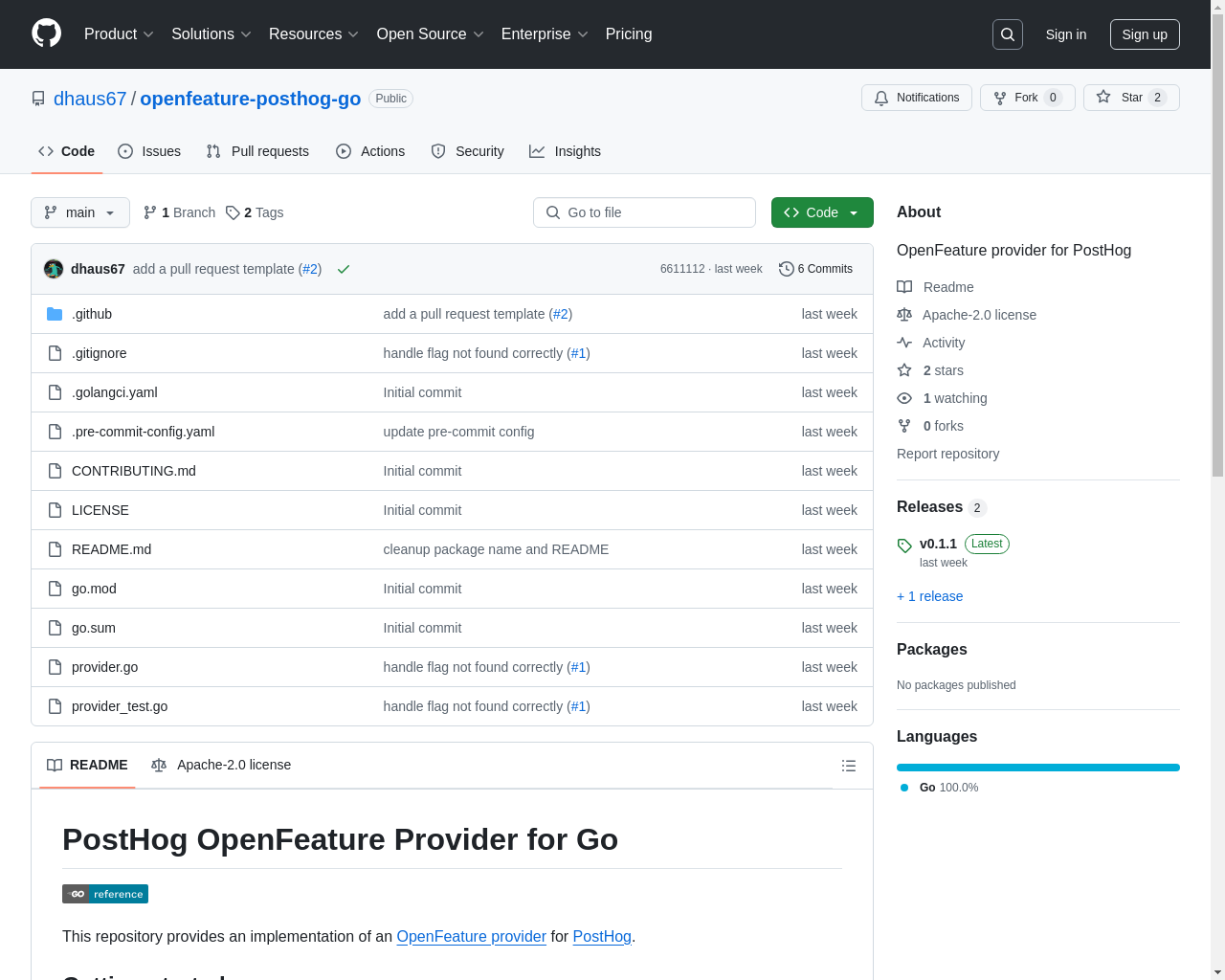

Highlight 1
The integration with PostHog enables robust tracking and analytics, providing valuable insights for product development.
Highlight 2
The implementation in Go is straightforward, allowing developers to quickly add it to their applications without extensive configuration.
Highlight 3
The library is actively maintained, ensuring that users benefit from recent updates and improvements to feature flagging capabilities.

Improvement 1
The documentation could be expanded to provide more comprehensive examples and use cases, enhancing user onboarding.
Improvement 2
Adding a user interface or dashboard for managing feature flags directly within PostHog could improve usability.
Improvement 3
Offering more advanced configuration options for flags, such as targeting specific user segments based on detailed criteria.
Product Functionality
Incorporate more dynamic features such as live updates for flag status and a user-friendly interface for non-developers.
UI & UX
Improving the navigation and layout of the documentation to make it easier to find relevant information quickly.
SEO or Marketing
Enhance the SEO by including blog posts or articles detailing case studies, usage examples, and success stories with OpenFeature PostHog.
MultiLanguage Support
Consider adding translations for documentation and user interfaces in popular languages to cater to a global audience.
- 1
What is OpenFeature PostHog Go?
It is a feature flagging and experimentation provider for Go applications that integrates with PostHog.
- 2
How can I integrate OpenFeature PostHog Go into my application?
You can integrate it by installing the library and following the usage guidelines provided in the documentation on the GitHub repository.
- 3
What are feature flags, and why should I use them?
Feature flags are a powerful technique to enable or disable features dynamically in your applications, allowing for controlled rollouts, A/B testing, and iterative development.
